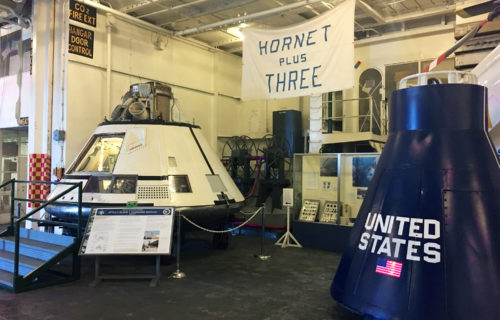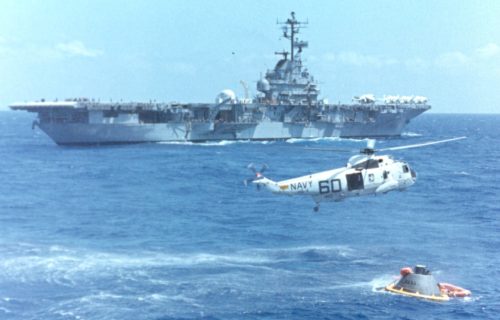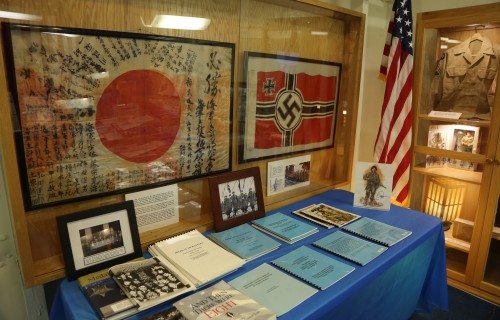The Space Race
See our larger artifacts from Hornet’s exciting service during the Space Race of the later 1960s! She served as the Prime Recovery Ship for not only the famous Apollo 11 and 12 missions–the first and second manned lunar landing missions–but also recovered an Apollo test command module. This display includes Gemini Boilerplate MSC-307, Apollo test capsule CM-011, the Mobile Quarantine Facility from Apollo 14, and real, full sized helicopters of the type that were used for the Mercury, Gemini, and Apollo recoveries.
Apollo Splashdown
An exhibition about the space programs that flourished after WWII during America’s Space Race with the USSR. The exhibition culminates with the Apollo 11 and 12 Moon landings which USS Hornet recovered after their splashdown in the Pacific Ocean. Artifacts include an early Grumman Corp model for the Lunar Landing Module (known as the LEM), artifacts made and distributed to the Hornet crew during the missions, and popular memorabilia of the time.
Nisei Veterans' Exhibit
Honors the contributions made by Nisei soldiers during WWII. The main focus is on the 20,000-plus American men of Japanese ancestry who served in the 442 Regimental Combat Team in Europe and the 6,000 men who served in the Military Intelligence Service in the Pacific.
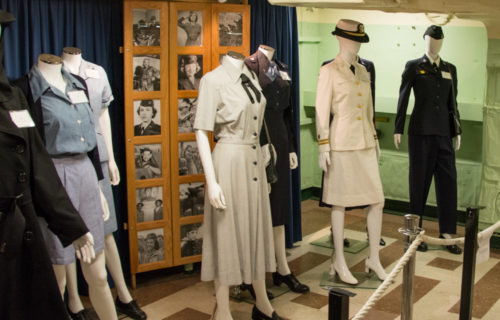
Women in the Military
Women served among the United States military as early as the American Revolution as battlefield nurses and water bearers. Our exhibition highlights the women took on roles once were only for men and served in the US Navy as Yeoman. Our exhibition highlights those women who served as WAVES in the US Navy, as SPARS in the Coast Guard, and those who served as US Marines.
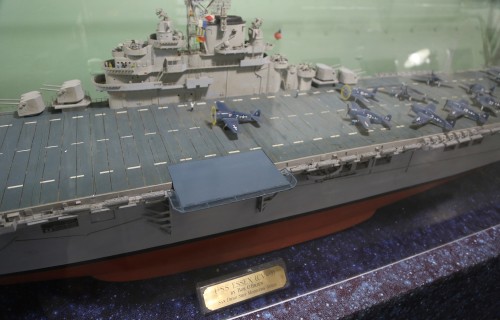
Sister Ship Row
Come aboard to hear stories from all twenty-three of Hornet’s sister ships of the Essex-class. Only four of these ship remain today, and all serve the public as museums around the country, but these ships operated between WWII to the 1990s and were an essential part of America’s history during both times of war and peace. Learn about the ships and their crew along with a greater narrative of how Essex-class carriers operated.
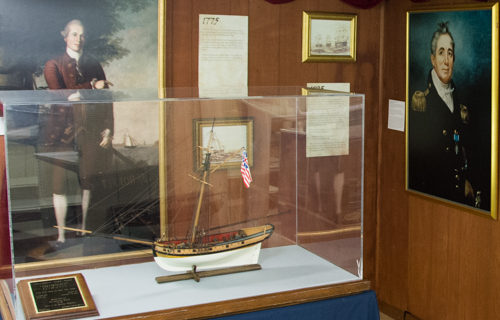
Hornet Legacy
This exhibition features artifacts related to the legacy of the USS Hornet name. The first Hornet was one of America’s first two ships, a sailing ship commandeered to fight against the British Navy. The name has been carried down through the U.S. Navy ever since and USS Hornet CV-12 was the eighth and final ship to bear the honor. Travel through history and learn about the exploits of all eight ships from the victory at the shores of Tripoli to the famous Doolittle Raid of WWII!
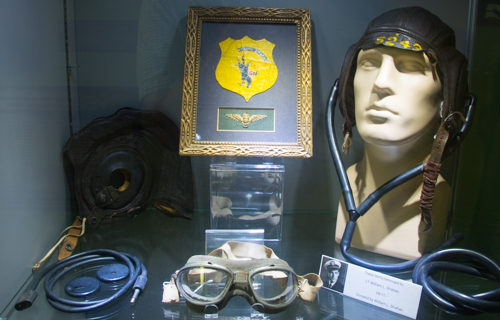
Air Group 11
An aircraft carrier is, at its heart, a floating airport dedicated to serving the air groups that fly off her. This exhibit spotlights artifacts and photographs from pilots all over the United States who flew as part of Air Group 11, which flew off Hornet from 1944-1945 in the Pacific during WWII.
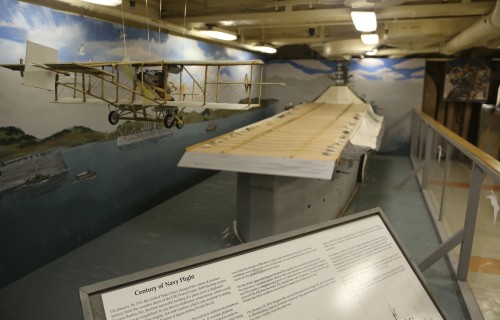
Evolution of the Aircraft Carrier
The aircraft carrier and carrier aircraft have evolved since the first experiments combining ship and plane. Visit this exhibit to see a large-scale display of USS Pennsylvania and the first aircraft to ever land on the deck of a ship back in 1911. This historical event happened right here in the San Francisco Bay and was the established the foundations of the aircraft carrier type.
From 1911, the exhibit explores the evolution of the carrier from its earliest beginnings to the onset of WWII.
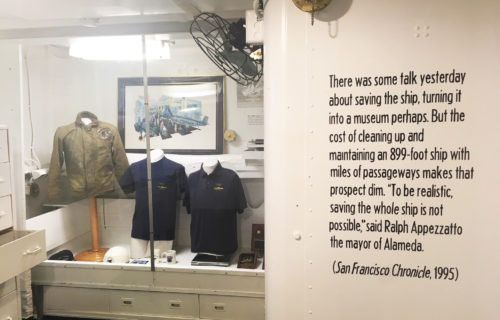
The Ray Vyeda Memorial Gallery: From Mothballs to Museum
To commemorate a dedicated USS Hornet CVA-12 crew member, Raymond Vyeda, and his efforts to save the ship, the Museum explores how the ship went from the mothball fleet after its decommissioning to the museum it is today. This exhibit features the stories and efforts of the many dedicated veterans and volunteers who preserved and restored.
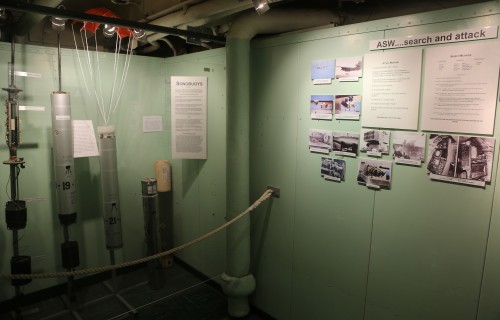
Anti-Submarine Warfare
USS Hornet’s final designation in active service was CVS-12, which assigned her as a carrier dedicated to Anti-Submarine Warfare. She was equipped with new equipment and air groups to help her carry out her new role and this exhibition features various types of sonobuoys used during WWII up to the late 1960s-1970s.
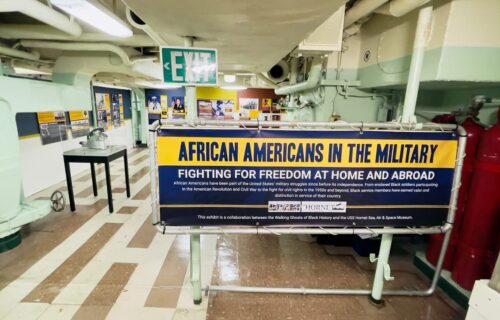
African Americans in the Military
African Americans in the Military. Fighting for Freedom at home and abroad. African Americans have been part of the United States’ military struggles since before its independence. From enslaved Black soldiers participating in the American Revolution and Civil War to the fight for civil rights in the 1950s and beyond, Black service members have earned valor and distinction in the service of their country. This exhibit is a collaboration between the Walking Ghosts of Black History and the USS Hornet Museum.
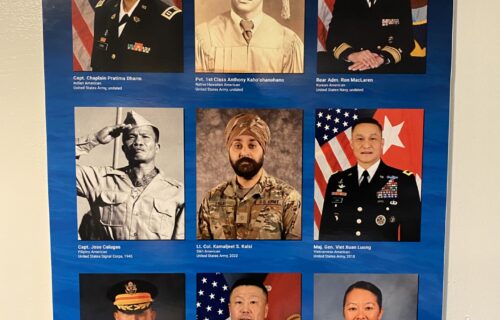
Asian Americans in the Military
Land of Promise, Life of Duty: Asian Americans in the Military. Asian Americans, Native Hawaiians, and Pacific Islanders have made significant contributions to the US military dating back to the War of 1912. They have served their country with great honor and distinction in times of war and peace. AANHPI service members – a community whose ancestry represents over fifty ethnic and language groups from the Far East, Southeast Asia, the Indian subcontinent, and the Pacific Islands – have fought courageously to achieve equality at home and freedom overseas.


